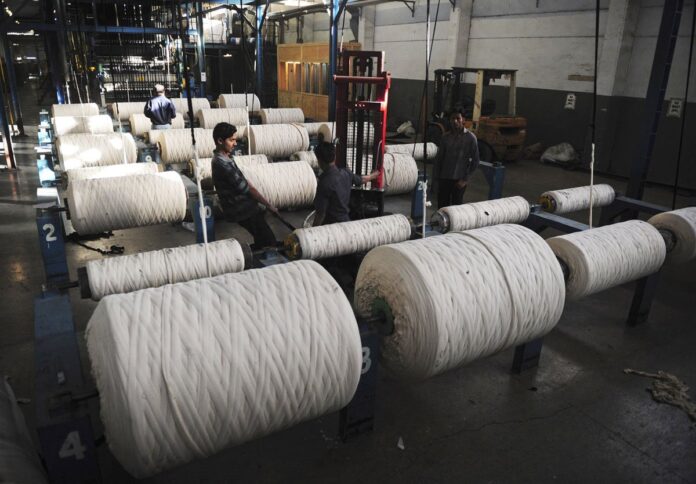Often, in these pages, we discuss what is wrong with a company. So when we are starting out our analysis, we look at a few classic examples that can tell us a lot. These include their losses, their missteps, and their bad strategic planning. All of these normally pop up as concerns particularly when we are talking about the textile industry, which has been visibly crumbling ever since the textile crisis of the 2010s. Mill after mill has been falling on the defaulter list and ceasing production. Most end up either being merged and consolidated with other mills, or there are often vague announcements of moving into, say, the rental space.
But for all their problems, Mian Textile Mill has not dealt with the problem with vague statements. The new acquirer of the mills submitted a 14 slide powerpoint deck to the Pakistan Stock Exchange on February 22, 2021, detailing exactly how Mian Textile Mill might become profitable again. However, to understand how the mill can be revitalized, it is important to get a sense of how badly the mill struggled to begin with.
Mian Textile Industries Limited was incorporated in Pakistan in December 1986 as a public limited company. The registered office of the Company is situated at 29-B/7, Model Town, Lahore and its manufacturing facilities were located in Tehsil Chunian, District Kasur.
The word ‘were’ is being used because the textile mills are a thing of the past. For a textile mill, the company did pretty poorly. It’s highest recorded sales were in 2006 (the last year for which there is publicly available data), at Rs919 million. It fell sharply after that: to Rs741 million in 2007, and then to Rs152 million by 2014. Crucially, the company’s cost of sales were always exorbitant, which is why the company only made a gross profit in 2006, 2007, and 2009. Every other year was a gross loss. This is also why the company did not make any net profit during the years between 2006 and 2015.

The warning signs were always there. In the company’s annual report for 2011, for instance, they had been hit hard by the high cost of production, geo political issues, unprecedented suspension of electricity & gas and uneven prices of cotton. “Due to above mentioned reasons; our conversion parties could not supply cotton regularly/full quantity to us for conversion, consequently, our mill could not run on its full capacity which resulted in decline of production and sales, causing serious production and financial losses,” the company noted.
Then, in 2014, a shortage of energy and high input costs forced the mill to close down temporarily in February 2014. This, as it would soon be discovered, would turn into a permanent problem. Which is why in April 2017, in a meeting held by shareholders, it was decided that the operation of the manufacturing unit was not viable, and that the unit be closed down in order to pay the loans to the remaining bank. The land, building and remaining plant & machinery of the company were also to be disposed off. The mill has not made any sales between 2014 and 2020, surviving solely on rental income from properties and trading income.
SO, what was to be done? The company received an offer from acquirer Ali Arif in March 2020, but that entire plan was set aside when the Covid-19 pandemic hit the country. By the end of the year, the company was looking for a new acquirer.
Enter Danish Ali, of the Elahi Group of Companies. The group began operations in Pakistan in 1971 as a trading house, and over the years diversified with interests in warehousing, logistics, ecommerce, technology and commodity trading. Elahi successfully acquired Mian Textile Mill on February 15, 2021, and intends to turn it into…warehouse management?
“The company plans to start with the warehouses in both Northern and Southern parts of the country. Initially the operations will start with a substantial area of total warehouse space. The company also intends to introduce Collateral Management Services,” read the material submitted to the PSX.

Elahi is betting big on the CPEC changing the game for warehouses. According to the group, 90% or more of CPEC trade is expected through road transportation, and around 28.2% of CPEC investment, or around $14 billion, is to be invested in the development of transport and logistics. As per the company’s math, private investment in Pakistan’s logistics and warehousing industry can be potentially around $31 billion.In particular cold chain logistics has considerable investment opportunity as Pakistan’s 50% agricultural produce is wasted due to lack of standardized storage facilities on the route.
So now, Elahi Group wants to start a network of warehouses, starting with Karachi and Gwadar Port. To do this, the group has a rights issue of Rs 1.2 billion in the pipeline, and a Rs 2.5 billion debt facility to finance the warehouse civil work.Around 560,000 sq ft are available with the Elahi Group and will be transferred into the business upon completion of rights issue in year one.
“We believe that in as little as six months (i.e Dec’21), MTIL can become a fully functional and profitable company,” the group says, somewhat optimistically. This takes into account a first year capacity utilization of 22%, and growth at 10% (which is below the market demand for warehousing, which grows at 20%). The group expects Mian Textile MIll to make a profit of Rs541 million in 2023.
That is more money that the company has probably ever seen in its existence. Will it work?


























Elahi group is a fraud – Danish Elahi is son of Ex PNSC Chairman Arif Elahi
Group reeks of corruption
Whatdo you mean ڈیجیٹل sbscription